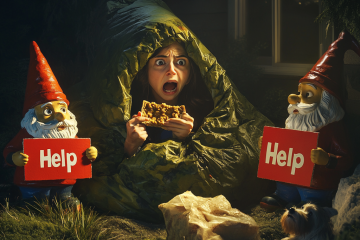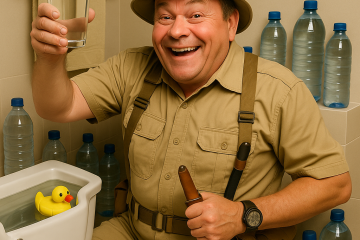by Kellene
Fact: Most people, when exposed to a threatening, frightful scenario, will inhale and then hold it; when what they really should do is just breathe.
Have you ever heard some sudden disturbing news? What do you hear next? Inward gasps, right?
Take target shooting for example. Shooting? Breathe
As a firearm instructor, you can imagine that I’m quite familiar with what a person does with their body when they are getting ready to shoot their firearm. They inhale, tense up their entire body, and then pull the trigger. As a result, they are missing their shot. A good bow hunter will tell you that you don’t want the bow to be too taut, right? In contrast, what I teach people is that when they bring the firearm up and in focus, they need to breathe in, and when they are ready to shoot they need to breathe out and THEN roll the finger on the trigger—not jerk or pull it. It’s amazing how much better folks shoot when they breathe.
When all of your muscles have been used to breathe in, the muscles are taut. Taut muscles fight with the mind against and our muscles, thus affecting our aim and our physical responses. When you breathe out the muscles are relaxed and you have no muscles fighting your aim. Every good shooter knows the value of breathing as much as every good chef knows the value of quality knives.
Breathe- Technique
Many police officers nationwide are taught a specific breathing technique for when they are involved in an emotionally climatic scenario. The use of such a technique has saved countless lives and prevented double the amount of injuries.
When you watch a martial arts expert break through bricks or wood, you will notice that they breathe out first. This actually gives them the maximum amount of strength and proper aim.
The lack of breathing temporarily suspends many needed brain cells. However, the delivery of oxygen to the brain relaxes and energizes the brain cells—especially those that would normally cause us to freeze or flee—even if that may not be the safest response to a crisis.
As I will discuss in greater detail tomorrow, your brain actually defaults to the subconscious operation. Unfortunately, if the subconscious hasn’t had a great deal of repetitive training to deal with this particular encounter, it will default to some very unproductive, and even dangerous responses.
For example, if you’ve been educated in the U.S. you’ve no doubt had to experience the earthquake drill of crouching under a desk. As a result, if you feel any shaking going on around you, your subconscious will tell you to hurry and get under a table or into an entry way during an earthquake. Why? Because this is the only training that your subconscious mind has to work with. However, I’m going to tell you that that is the WORST thing you should do in the event of an earthquake. You are more likely to be crushed under a piece of furniture or a fallen entry way. Instead you should crouch just to the side of a heavy table or your bed. It is there where you are more likely to find a space that is not affected by falling roofs, etc. You will also more likely have access to oxygen (To give yourself a better picture of this, notice where you dog goes when they crawl under the covers with you. They have space just to the side of your body).
Ok. Now that I’ve told you this, even if you wholeheartedly believe it, you will need to access this knowledge when the shaking begins. However, because you will inevitably breathe in and panic, you will dramatically slow your brain’s response time. So, what do you need to do? You need to teach yourself to breathe. Ideally, you will breathe in four counts, hold it four counts (in order to get the oxygen permeated through the brain cells), and then breathe out four counts. Just that one breathing process is what your brain needs to disengage the automatic response and engage the logical, more desired response. The breathing connects your conscious mind and overrides the subconscious that may be taking over.
This is the first step at handling panic. Tomorrow I will share with you the next one. Until then, breathe in four counts, hold it; and then breathe out four counts. Nice and slow. Do it again when your child comes home with a poor report card or when you burn dinner or even when your computer crashes.






